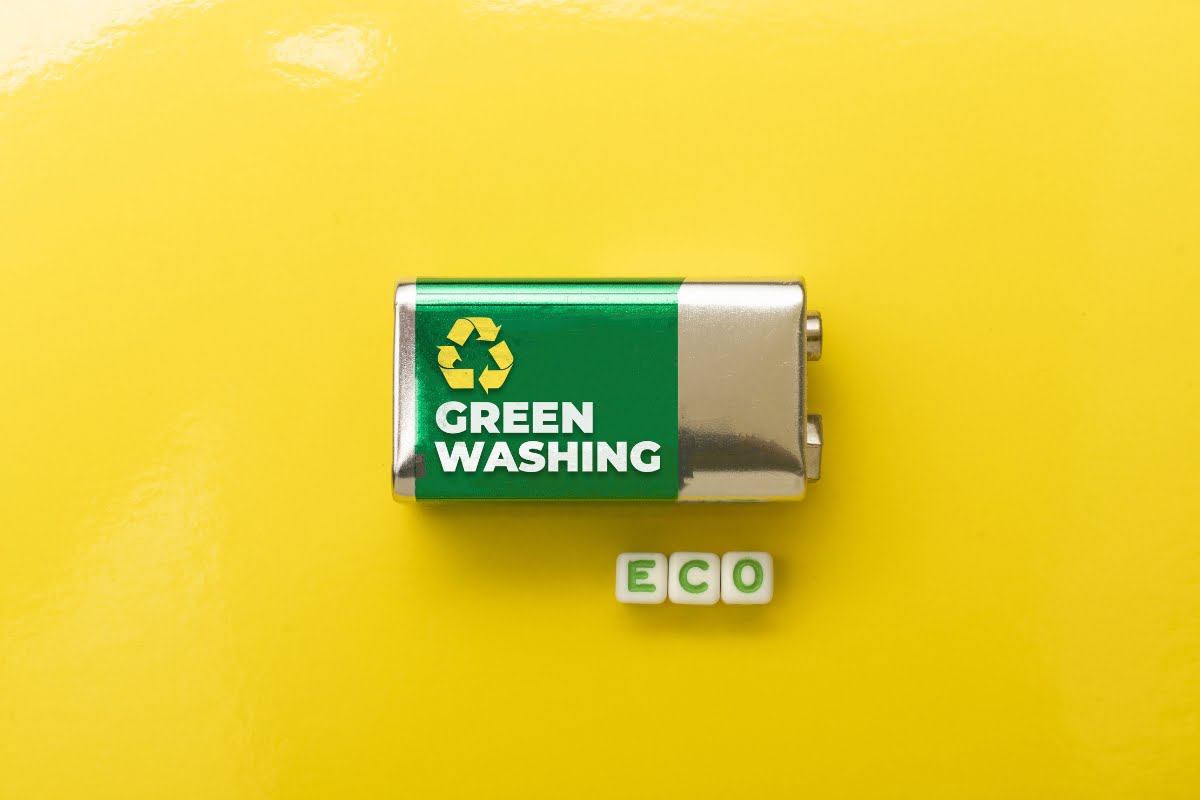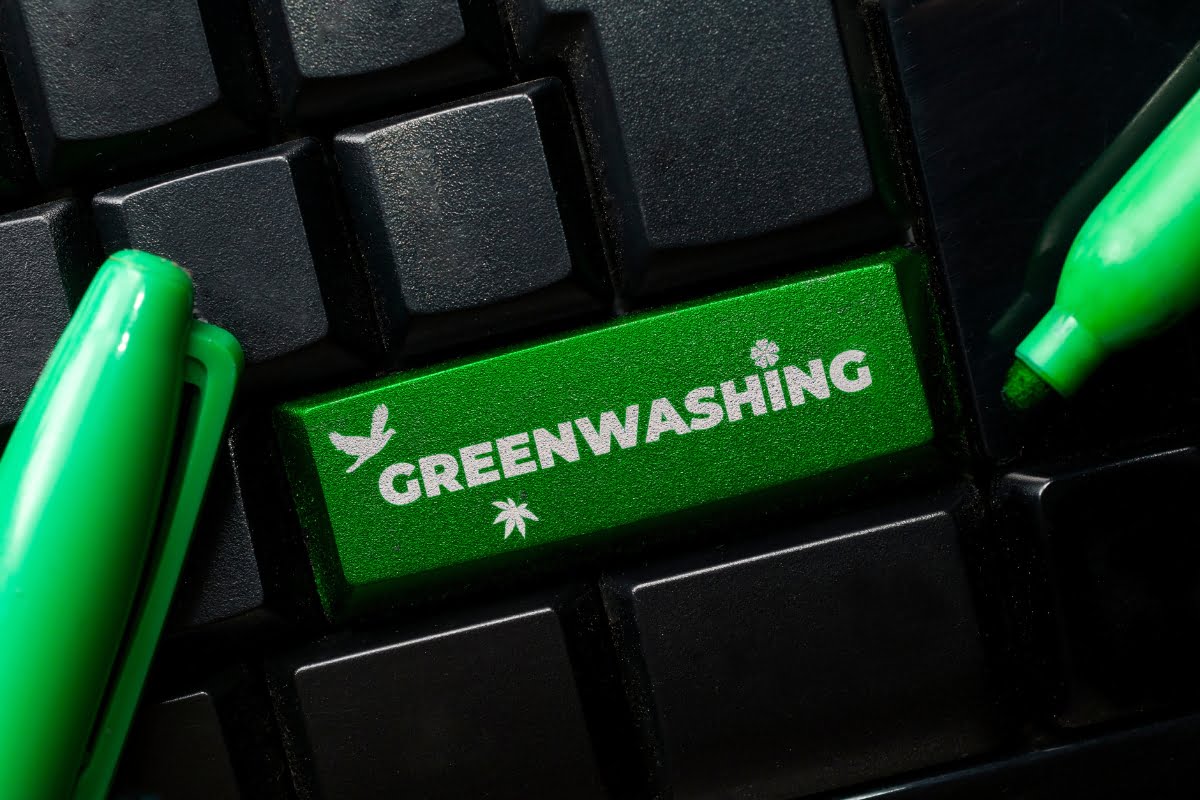In a world where sustainability is more than just a buzzword, marketers find themselves walking a fine line. They strive to promote their products and services as eco-friendly, but how can consumers be sure they’re not falling victim to greenwashing?
In this blog post, we will delve into the intricacies of greenwashing, how to avoid greenwashing, and uncover the truth behind this ever-present issue. So, strap in and get ready to unmask the reality behind these deceptive marketing tactics.
Are Companies Tricking You? Learn How to Avoid Greenwashing
Understanding Greenwashing: What Is It and Why Does It Matter?

Greenwashing has become a prevalent issue in the business world, with many companies using deceptive marketing tactics to present themselves as environmentally friendly. But what exactly is greenwashing, and why does it matter?
Greenwashing refers to the practice of making misleading or unsubstantiated claims about a company’s environmental practices or products. It involves creating a false image of sustainability to deceive consumers and gain a competitive advantage. This can be done through clever advertising, labeling, or packaging that suggests a product is eco-friendly when it is not.
Understanding greenwashing is crucial because it allows us to make informed choices as consumers. By recognizing the signs of greenwashing, we can avoid falling into the trap of supporting companies that are not genuinely committed to sustainability. It helps us separate genuine eco-friendly products and practices from those that are merely trying to capitalize on the growing demand for sustainability.
As a marketer, it is essential to be aware of greenwashing and its implications. Misleading customers with false claims can harm a company’s reputation and undermine its credibility. Instead, marketers should focus on implementing authentic sustainable practices and communicating them transparently to their audience.
The Rise of Greenwashing: Understanding the Deceptive Marketing Tactics

Greenwashing has become a prevalent issue in today’s marketing landscape. As consumers become more conscious about the environment, companies have seized the opportunity to capitalize on this trend. However, many of these companies engage in deceptive marketing tactics known as greenwashing. In this blog post, we will delve into the rise of greenwashing and help marketers understand how to avoid falling into this trap.
Greenwashing refers to the act of misleading consumers into believing that a company’s products or practices are environmentally friendly when, in reality, they are not. It is a form of deceptive marketing that aims to create a positive image for a company by making false or exaggerated claims about its environmental initiatives. Unfortunately, greenwashing has become a widespread phenomenon across various industries.
One of the reasons behind the rise of greenwashing is the increasing demand for sustainable and eco-friendly products. As consumers become more environmentally conscious, they seek out brands that align with their values. This has created a market for companies to exploit by making false claims about their sustainability efforts. By promoting themselves as green, these companies aim to attract customers and boost their sales.
Greenwashing can take many forms, from vague and misleading labels to misleading advertisements. Some common tactics used by companies include using terms such as “eco-friendly,” “natural,” or “green” without any substantiated evidence. They may also highlight a small aspect of their product or operation that is environmentally friendly while downplaying the overall negative impact.
Spotting the Signs: How to Identify Greenwashing in Product Labels

Greenwashing refers to the practice of making false or misleading claims about the environmental benefits of a product or company. In order to truly make informed choices, it is important for consumers to be able to identify greenwashing in product labels. Here are some key signs to look out for:
- Vague or generic language: One of the most common tactics used by greenwashing marketers is to use vague or generic language on their product labels. Terms like “natural,” “eco-friendly,” or “green” are often employed without any clear definition or certification to back them up. Be wary of such terms and look for specific and verifiable eco-labels instead.
- Lack of transparency: A transparent company will provide detailed information about their sustainability practices, including their sourcing, manufacturing processes, and certifications. If a product label is devoid of any specific information about its environmental impact, it may be a red flag that the company is hiding something.
- Overemphasis on a single eco-friendly aspect: Greenwashing often involves the exaggeration or overemphasis of a single eco-friendly aspect of a product while ignoring its overall environmental impact. For instance, a company may highlight the fact that their packaging is made from recycled materials, but fail to mention that the product itself is made using harmful chemicals.
- False or irrelevant images: Pay close attention to the images used on product labels. Greenwashing marketers often use images of lush green landscapes, happy animals, or nature-inspired designs to create a false impression of sustainability. However, these images may have no direct connection to the actual product or its environmental impact.
- Lack of third-party certifications: Genuine eco-friendly products often carry third-party certifications from reputable organizations. These certifications provide independent verification of a product’s environmental claims. When examining product labels, look for certifications such as Energy Star, USDA Organic, Fair Trade, or Forest Stewardship Council (FSC).
- Incomplete or misleading information: Greenwashing marketers may provide incomplete or misleading information on their product labels to create an impression of sustainability without actually delivering on it. Scrutinize product labels for any discrepancies or inconsistencies, and do additional research if necessary to verify the claims made.
Greenwashing Buzzwords: Decoding Misleading Environmental Claims

Greenwashing is a pervasive issue in today’s marketing landscape, with companies using misleading environmental claims to promote their products or services. As a marketer, it is crucial to understand the deceptive tactics used in greenwashing and how to avoid falling into this trap.
By decoding the buzzwords commonly associated with greenwashing, you can ensure that your marketing efforts are truly environmentally friendly and transparent.
One of the most important steps in avoiding greenwashing is to educate yourself about the various misleading environmental claims that companies often make. By understanding the buzzwords and phrases that are commonly used in greenwashing, you can easily spot when a claim may be deceptive.
Some of the common greenwashing buzzwords include “natural,” “eco-friendly,” “sustainable,” and “green.” While these terms may sound appealing, they are often used without any concrete evidence to back them up.
To avoid greenwashing, it is important to look beyond buzzwords and examine the specific actions and practices of a company. Instead of taking their claims at face value, dig deeper and ask for evidence or certifications that support their environmental claims.
For example, if a company claims to be “sustainable,” ask for specifics about their sustainability initiatives, such as their use of renewable energy sources or their efforts to reduce waste.
Another important aspect of avoiding greenwashing is to be aware of green certifications and labels. Many companies use third-party certifications or labels to lend credibility to their environmental claims.
However, not all certifications are created equal, and some may be nothing more than a marketing tactic. As a marketer, it is crucial to research and understand the validity of different certifications and labels before using them to promote a product or service.
Transparency is key when it comes to avoiding greenwashing. As a marketer, be open and honest about your company’s environmental practices. If there are areas that need improvement or if you are still working towards certain sustainability goals, communicate that to your audience. By being transparent about your efforts, you build trust with your customers and demonstrate a genuine commitment to sustainability.
Shifting Focus: The Importance of Transparency in Environmental Marketing

Transparency is a crucial aspect of environmental marketing. As a marketer, it is important to shift your focus towards being transparent in your messaging and practices. In a world where consumers are becoming more conscious about the environment, they are actively seeking out products and services that align with their values. This is where the importance of transparency comes into play.
To avoid greenwashing, a term used to describe the deceptive marketing tactics where companies portray themselves as environmentally friendly when they are not, marketers need to be honest and open about their environmental initiatives. It is not enough to simply claim that a product is “green” or “eco-friendly.” Consumers are demanding proof and evidence of these claims.
One way to achieve transparency in environmental marketing is through third-party certifications and labels. These certifications provide consumers with the assurance that the product or service has undergone rigorous testing and meets specific environmental standards. By displaying these certifications prominently, marketers can build trust with their target audience.
Another strategy is to provide detailed information about the environmental impact of the product or service. This includes sharing data on carbon emissions, water usage, and waste management. By being transparent about the environmental footprint, marketers can empower consumers to make informed choices.
Furthermore, it is important for marketers to engage in open and honest dialogue with their customers. This means actively listening to their concerns and addressing any questions or doubts they may have. By being transparent about the limitations and challenges of environmental initiatives, marketers can build credibility and trust.
Walking the Talk: Best Practices for Marketers to Avoid Greenwashing

As marketers, it is our responsibility to ensure that our communication and practices align with the values and principles of sustainability.
- Transparency is Key: One of the most important ways to avoid greenwashing is through transparency in your marketing efforts. Be honest and clear about the environmental impact of your products or services. Provide accurate information about the steps you are taking to be more sustainable. This can include sharing data on your carbon footprint, water usage, or waste management practices.
- Substantiate Your Claims: Greenwashing often occurs when companies make vague or unsubstantiated claims about their environmental impact. To avoid this, ensure that any claims you make are backed by credible evidence. Use third-party certifications or eco-labels that validate your sustainability efforts. Providing concrete evidence will enhance your credibility and trustworthiness.
- Educate and Engage: Avoid greenwashing by educating and engaging your audience on sustainability issues. Share information about the environmental challenges we face and how your company is actively working towards solutions. Encourage your customers to make informed choices and participate in sustainable practices. By actively involving your audience, you create a sense of shared responsibility and authenticity.
- Set Clear Goals and Track Progress: Demonstrate your commitment to sustainability by setting clear goals and tracking your progress. Establish measurable targets, such as reducing carbon emissions or increasing the use of renewable resources. Regularly report on your progress to showcase your dedication to sustainability. This not only keeps you accountable but also builds trust with your audience.
- Collaborate with Experts: To ensure your sustainability efforts are genuine, collaborate with experts in the field. Seek advice from environmental organizations, sustainability consultants, or academic institutions. Their expertise can help you develop robust strategies and verify the accuracy of your claims.
- Avoid Greenwashing Jargon: Avoid using vague or misleading terms that may confuse consumers. Instead, use clear and specific language to communicate your sustainability initiatives. For example, instead of using terms like “green” or “eco-friendly,” provide concrete details about the specific environmental benefits of your products or services.
- Continuously Improve and Innovate: Sustainability is an ongoing journey. Continuously strive to improve your practices and innovate new solutions. Embrace feedback from your customers, employees, and stakeholders to identify areas for improvement. By demonstrating a commitment to progress and innovation, you will differentiate yourself from greenwashing competitors.
Educating Consumers: How to Empower People to Make Informed Choices

In today’s world, where information is readily available at our fingertips, it is crucial to empower consumers to make informed choices.
One area where this empowerment is particularly important is in the realm of marketing, where greenwashing has become a growing concern. As a marketer, it is your responsibility to avoid greenwashing and educate consumers about the truth behind your products or services.
So, how can you ensure that you are not falling into the trap of greenwashing? Here are some essential tips to keep in mind:
- Transparency is Key: Be transparent about your products or services and provide accurate information. Consumers appreciate honesty, and by being open about your practices, you build trust and credibility. Clearly communicate the environmental impact of your offerings, highlighting any certifications or eco-friendly practices you follow.
- Do Your Research: Before making any claims about the environmental benefits of your products or services, thoroughly research and substantiate those claims. Make sure you have the evidence to back up your statements. Consumers are becoming increasingly savvy and will fact-check your claims, so it’s essential to be accurate.
- Avoid Exaggeration: While it may be tempting to embellish the positive aspects of your products or services, it is crucial to avoid exaggeration. Misleading consumers with exaggerated claims can result in reputational damage and loss of trust. Stick to the facts and present them in a clear and concise manner.
- Provide Proof: If you have any certifications, awards, or third-party evaluations that support the environmental claims you make, highlight them. This will provide consumers with tangible evidence of your commitment to sustainability. Make this information readily available on your website or product packaging.
- Educate and Engage: Take the opportunity to educate your consumers about the importance of making informed choices. Share information about greenwashing and how to identify it. Engage with your audience through social media platforms, blog posts, or newsletters, providing them with valuable insights into sustainable practices.
- Be Accountable: If you make a mistake or unintentionally mislead consumers, take responsibility and rectify the situation promptly. Admitting fault and taking necessary steps to correct it will show consumers that you are committed to transparency and building long-term relationships. Empowering consumers to make informed choices is an ongoing process.
The Path Forward: Building a Sustainable and Ethical Future Together
Building a sustainable and ethical future requires collective efforts and a conscious approach from individuals, businesses, and governments. As marketers, it is crucial to understand the importance of avoiding greenwashing and promoting genuine sustainability practices.
Sustainability is an ongoing journey. Regularly review and reassess your sustainability practices to identify areas for improvement. Engage in dialogue with your customers, employees, and other stakeholders to understand their expectations and concerns.
By avoiding greenwashing and promoting genuine sustainability practices, we can build trust, foster consumer loyalty, and contribute to a better world. Let’s commit to transparency, education, collaboration, and continuous improvement as we navigate the path forward together.
Newman Web Solutions understands the importance of remaining transparent to your audiences while maintaining your brand. Grow your brand with integrity with our range of branding services, from our logo design to digital marketing.
Get started by reaching out for a consultation through our website form, or give us a call at (404) 301-9189. Let’s work together to ensure a brand that continues to move forward to a sustainable and ethical future.





